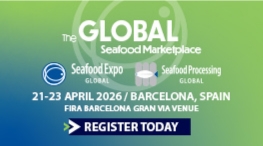The aquaculture and marine fisheries research laboratory of the Lithuanian Fisheries Service is a brand new experimental facility on the Curonian spit that is intended to serve multiple purposes. The laboratory was built with support from the European Fisheries Fund and will contribute to aquaculture and marine studies, both theoretical and applied, in Lithuania as well as the wider Baltic region.
Lithuania
-
-
The Curonian lagoon is separated from the Baltic Sea by the Curonian spit. The lagoon is 1,584 sq. km in size and harbours a number of fish species, which provide the basis for a fishery in the lagoon. The lagoon, like the spit, is divided into a Lithuanian part in the north and a Russian part in the south. At the northern end of the lagoon is the city of Klaipeda, where a narrow strait connects the lagoon to the Baltic sea.
-
A national aquaculture workshop was held in Vilnius to highlight the latest developments in the aquaculture industry,…
-
In Lithuania, a new trend has emerged in the way that aquaculture production is sold to consumers: a few local fish farmers and processors have opened their own retail outlets to sell their products. These specialty shops enable the producers to sell fish directly to consumers, bypassing the typical distributors of supermarkets or fishmongers. Three such businesses who have practiced this retail strategy are JSCs Išlaužo žuvis, Kintai, and Vasaknos. These firms established their shops in response to the growing desire for fresh, local fish shown both in Lithuania and in other EU countries.
-
The Fisheries Service under the Ministry of Agriculture of the Republic of Lithuania has established and opened a sea-fisheries and aquaculture laboratory, the construction and modernisation of which were funded by the European Fisheries Fund. The laboratory was created through the Programme of Integrated Science, Studies and Business Centre for the Development of the Lithuanian Maritime Sector.
-
The Lithuanian fisheries sector has a long historical traditions and is a part of the national heritage in the Baltic Sea coast area. The segment comprises a high seas fleet, a Baltic Sea fleet, and a coastal fleet. There is also a small freshwater fishery in the Curonian lagoon. The aquaculture industry in Lithuania is dynamic and the production of farmed fish has been increasing in terms of both value and volume.
-
Fisheries plays an important role in the economies of coastal regions throughout Europe. It is therefore vital to exploit the oceans’ aquatic resources sustainably to avoid the depletion of fish stocks, a rusting fishing fleet, unemployed fishermen and seafood shortages.
-
The fish processing sector in Lithuania is based mainly on imported raw materials which are converted into a variety of products both for domestic consumption and for export. Some companies are also using locally-caught and locally-farmed fish to add variety to the range of products they manufacture.
-
Lithuanian aquaculture production is predominantly common carp, which amounts to about nine tenths of the output. The remainder comprises a number of species including rainbow trout, other carp varieties, sturgeon, eel, and catfish that are grown in different production systems. Further down the value chain sales of live fish are being replaced with more value-added products in response to changes in consumer demand.
-
Lithuania’s high seas fishing fleet comprises some 12 vessels, a number which has stayed fairly stable the last few years, but which can also fluctuate depending on fishing opportunities. The fleet has been active in the Northwest and the North East Atlantic, the South Pacific, the EU Western Waters, as well as in the Svalbard fishing area, and the exclusive economic zones (EEZ) of Mauritania, Senegal, Guinea, Morocco, and Greenland.




